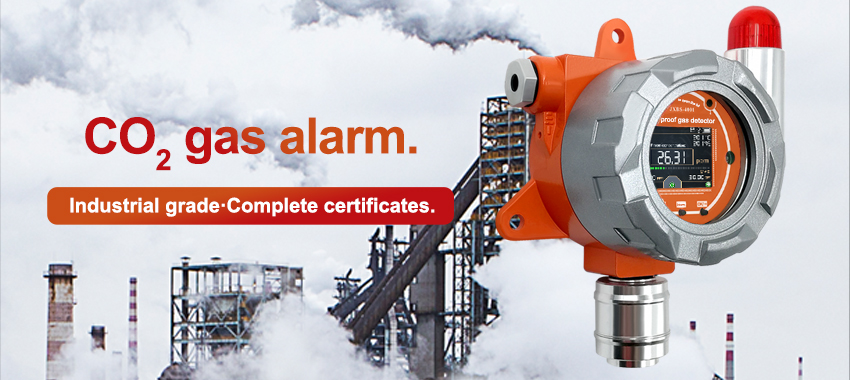Carbon dioxide (CO2) is an odorless, colorless gas that is naturally present in the Earth’s atmosphere. However, elevated levels of CO2 can pose health risks and compromise indoor air quality. To mitigate these dangers, CO2 alarm systems have been developed to detect and alert occupants about excessive CO2 concentrations. In this article, we will explore the concept of CO2 alarms, their functioning, benefits, and their importance in ensuring a healthy and safe indoor environment.

Understanding CO2 Alarm:
CO2 alarms, also known as carbon dioxide detectors or CO2 monitors, are devices designed to measure and indicate the concentration of CO2 gas in indoor environments. These detectors help identify when levels exceed acceptable thresholds, triggering an audible or visual alarm to prompt necessary actions.
Functioning and Importance:
a. Health and safety: Elevated levels of CO2 can cause headaches, dizziness, fatigue, and even unconsciousness in extreme cases. CO2 alarms play a vital role in safeguarding human health by providing early warnings when CO2 concentrations rise above recommended levels. This allows occupants to take appropriate measures, such as improving ventilation or exiting the area if necessary.

b. Indoor air quality: Monitoring CO2 levels is crucial for maintaining good indoor air quality. High CO2 concentrations indicate inadequate ventilation, which can lead to a buildup of other pollutants and unpleasant odors. CO2 alarms serve as an indicator of general air quality, ensuring optimal living, working, and educational environments.
c. Energy efficiency: CO2 alarms can also contribute to energy conservation efforts. By detecting high CO2 levels, occupants can identify areas with insufficient ventilation, leading to unnecessary energy consumption. Adjusting ventilation systems based on CO2 readings helps optimize energy usage while maintaining adequate air quality.
d. Compliance with regulations: In some jurisdictions, CO2 monitoring is a legal requirement for certain buildings, such as schools, offices, and public spaces. CO2 alarms ensure compliance with regulations aimed at protecting occupant health and safety.
Types of CO2 Alarms:

a. Non-dispersive infrared (NDIR) sensors: NDIR technology is commonly used in CO2 alarms due to its accuracy and reliability. These sensors measure the absorption of infrared light by CO2 gas, providing precise measurements even at low concentrations.
b. Color-changing indicators: Some CO2 alarms incorporate color-changing indicators to provide a visual indication of CO2 levels. These indicators change color based on the concentration of CO2, allowing occupants to easily assess air quality at a glance.
c. Smart alarms: With advancements in technology, smart CO2 alarms have emerged. These devices connect to Wi-Fi networks and can send real-time notifications to users’ smartphones or other smart devices. They often integrate with home automation systems, providing a holistic approach to maintaining indoor air quality.
Placement and Maintenance:
CO2 alarms should be strategically placed to ensure accurate readings. They are typically installed at breathing height, away from potential obstructions or direct airflow sources. Regular maintenance, including calibration and battery replacement, is essential to ensure reliable performance.
It is crucial to differentiate CO2 alarms from carbon monoxide (CO) alarms. While both are important for indoor safety, they serve different purposes. CO alarms detect the presence of carbon monoxide, a poisonous gas, while CO2 alarms monitor CO2 concentrations.
Conclusion:
CO2 alarms are instrumental in protecting human health, maintaining good indoor air quality, and promoting energy efficiency. By alerting occupants about elevated CO2 levels, these alarms enable timely actions to improve ventilation and mitigate potential health risks. Whether in residential, commercial, or educational settings, CO2 alarms play a vital role in ensuring safe and comfortable indoor environments. As awareness grows regarding the importance of indoor air quality, the use of CO2 alarms will continue to increase, contributing to healthier spaces and enhancing overall well-being.